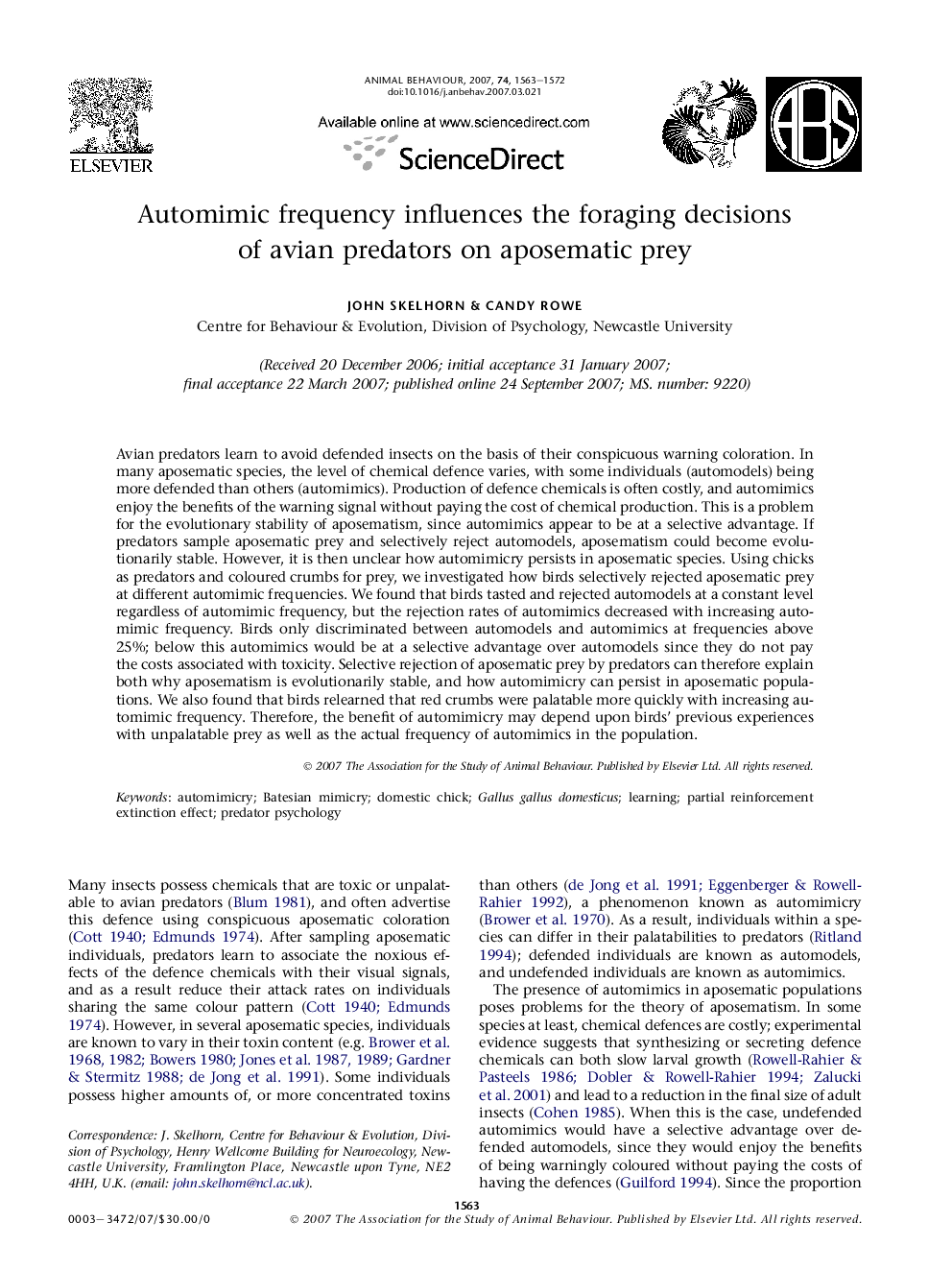| Article ID | Journal | Published Year | Pages | File Type |
|---|---|---|---|---|
| 2418311 | Animal Behaviour | 2007 | 10 Pages |
Avian predators learn to avoid defended insects on the basis of their conspicuous warning coloration. In many aposematic species, the level of chemical defence varies, with some individuals (automodels) being more defended than others (automimics). Production of defence chemicals is often costly, and automimics enjoy the benefits of the warning signal without paying the cost of chemical production. This is a problem for the evolutionary stability of aposematism, since automimics appear to be at a selective advantage. If predators sample aposematic prey and selectively reject automodels, aposematism could become evolutionarily stable. However, it is then unclear how automimicry persists in aposematic species. Using chicks as predators and coloured crumbs for prey, we investigated how birds selectively rejected aposematic prey at different automimic frequencies. We found that birds tasted and rejected automodels at a constant level regardless of automimic frequency, but the rejection rates of automimics decreased with increasing automimic frequency. Birds only discriminated between automodels and automimics at frequencies above 25%; below this automimics would be at a selective advantage over automodels since they do not pay the costs associated with toxicity. Selective rejection of aposematic prey by predators can therefore explain both why aposematism is evolutionarily stable, and how automimicry can persist in aposematic populations. We also found that birds relearned that red crumbs were palatable more quickly with increasing automimic frequency. Therefore, the benefit of automimicry may depend upon birds' previous experiences with unpalatable prey as well as the actual frequency of automimics in the population.
